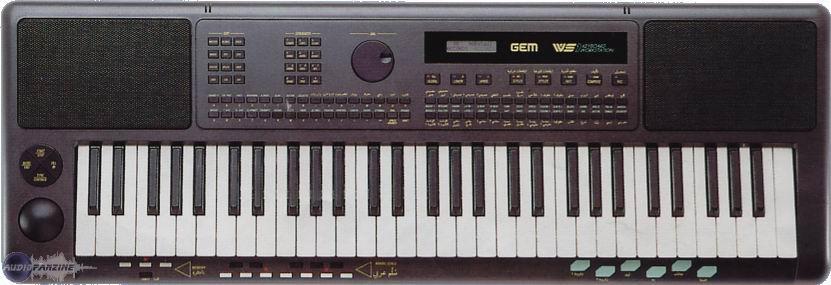
Excellent condition, comes with gig bag included. Very versatile instrument, super realistic sounds. TECHNICAL SPECIFICATION • •v Large library of PCM samples and waveforms •v 128 User programmable voices, complete with multi-sampled FM Piano and Drumkit •v 97 GLOBAL PRESETS – user programmable •v 2 Digital Effects Processors – preset: 16 Reverberations, + 16 (Chorus, Flanger, Delay, Phaser) •v Dynamic 61 notes Keyboard (C2 – C7) •v 1 programmable SPLIT, LAYER/DUAL/SPLIT mode (for each GLOBAL), Dynamic Switch:3 Levels •v High level user interface for Real-Time performances, including Pitch Ball and programmable Function Pedals •v 64 ROM Styles: 32 Internal ORIENTAL, 32 Prog.
Occidental, up to 32 User programmable Styles •v Arabkit: 5 Octaves, 3 of which include Arabic Percussion sounds •v Drumkit: 5 Drum sets, Rock – Dance – Jazz – Ethnic – Human •v PADS: 6 Drum pads •v Multi Track Sequencer with professional editing for: Real-Time Songs, Song Styles, Song Patterns. Elite 30r power meter manual instructions. •v Chain Compose function •v MIDI IN – MIDI OUT – MIDI THRU •v OUT (LEFT/RIGHT) •v IN(LEFT/RIGHT) •v Digital Pre-amplifier with Loudness Control •v Dimensions WS1 Oriental: (H x L x D) mm.
Please, i' need the service manual of GEM sw1. After powering up the ws1,the screen displays only blocks in the first line, and it is stuck in. User Manual Gem Ws1 - Manual Gem Ws1 Chaabi Gem ws1. Orchestra El Farah Boite rythme GEM WS1 Chaabi beni mellal Fl. Fillable GEM WS2 Keyboard Workstation Service Manual - Deep!sonic. Fill Sign Online, Print, Email, Fax,.
GEM S2 Turbo Italian company Generalmusic (also called GEM) was known for producing home organs and semi-professional accompaniment keyboards. But they also made a few attempts at producing professional music workstations. The first of them was the S-Series, introduced in 1992. GEM called it the 'Music Processor' because of its many advanced functions, including a powerful sequencer, the ability to read and edit samples, excellent real-time controllers, and many others. In 1993, GEM upgraded the S-Series with the so-called 'Turbo kit' which allowed for many new functions and doubled the polyphony. The Turbo kit was also sold separately as an upgrade for the original models.
GEM also released a rack version, called the S2R, with the Turbo upgrade already installed. There were two original models, with only one difference between them: S2 and S3. The S2 has a 61-note keyboard and the S3 has a 76-note keyboard. Both keyboard models have excellent semi-weighted keys with touch/release velocity, polyphonic aftertouch and metal contacts.

On the front panel, there are also seven programmable sliders, seven programmable buttons and Pitch and Modulation wheels. All functions are logically and clearly displayed on a large graphical LCD with light blue neon back-lighting. Thanks to the excellent hardware and also thanks to two MIDI I/O's, the S2/S3 is an ideal master keyboard for the home studio. GEM S3 The S-Series can do excellent analog synthesizer emulations, impressive textures, punchy basses, synth strings & brass, and also a very nice emulation of tone-wheel organs. The acoustic sounds are rather obsolete in comparison to newer instruments, but some of them are still very nice (i.e. The synthesizer engine is 16-note polyphonic (32 on Turbo models).
The sound structure is similar to older Korg models: Two oscillators per voice (the Turbo models can also use one oscillator per voice, but with some limitations) which can use one (or two on Turbo models) of the 209 waveforms included in ROM or any of the multisamples loaded into RAM. There are two excellent 12 dB/Oct.
Resonant filters per voice which can be independently set as: Lowpass, Highpass, Bandpass, Parameter Cut, or Parameter Boost. If the setting on both filters is exactly the same, they work as one 24dB/Oct. This allows the S2/S3 to make very nice analog-like sweeps. Next, there are three 10-segment envelopes (Amp, Filter, Pitch) with the ability to create a continuous loop on any portion of the envelope. There is one LFO with Sine, Triangle, Saw, Square, Random and S&H shapes, and a Panorama function with its own additional envelope for stereo imaging.